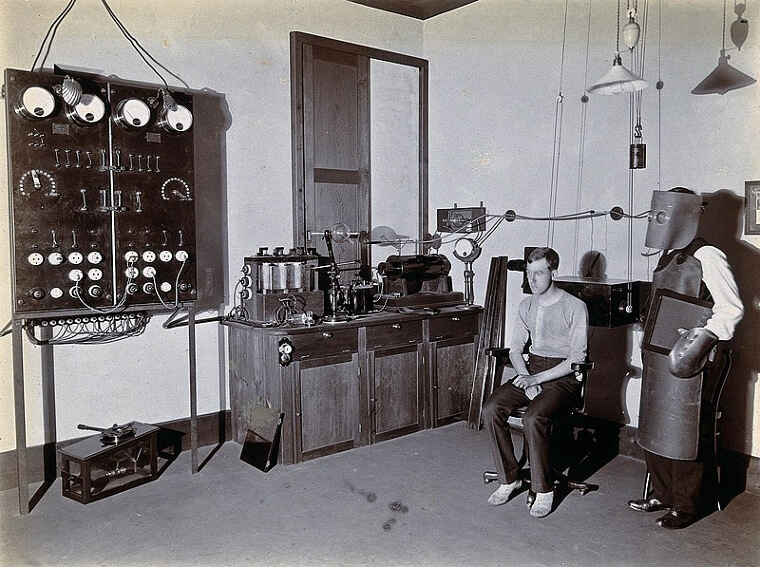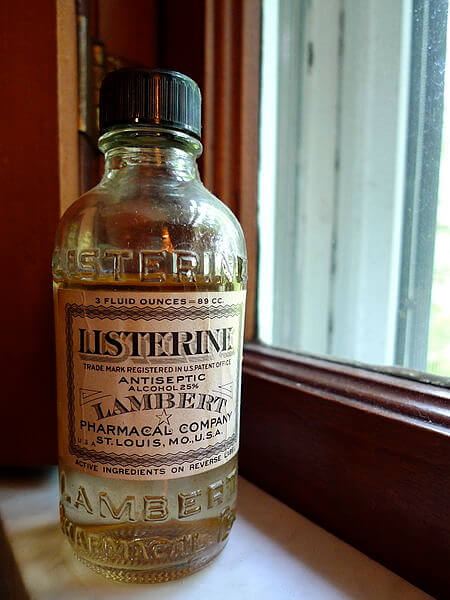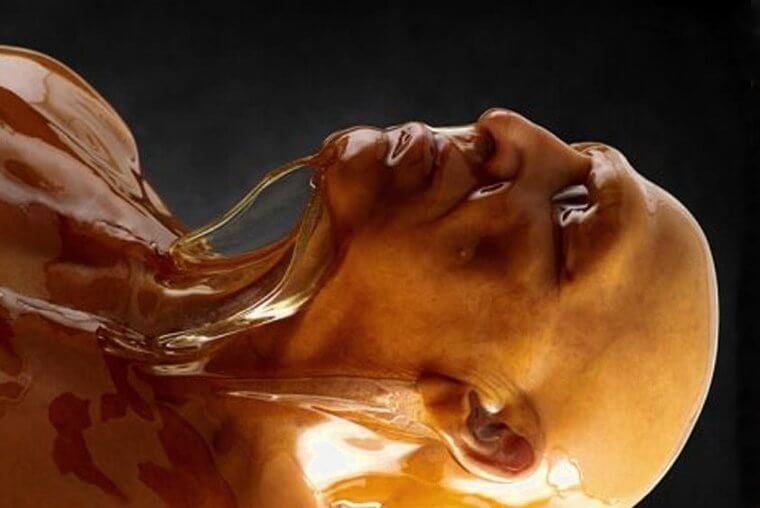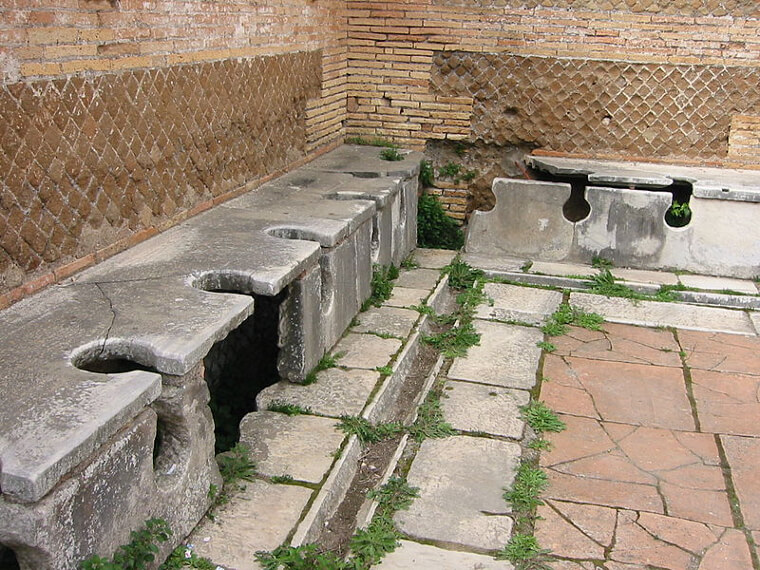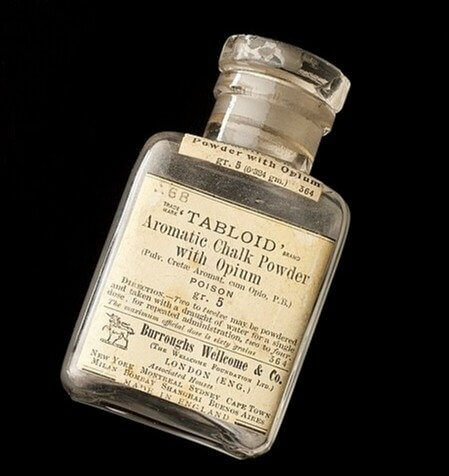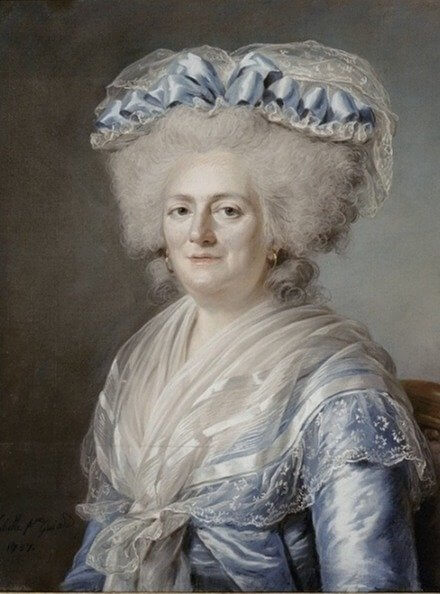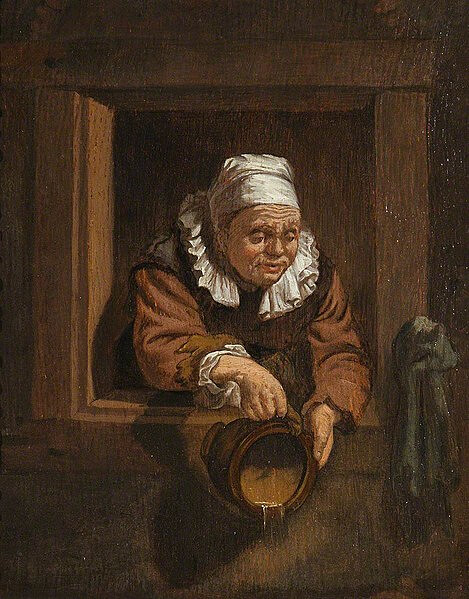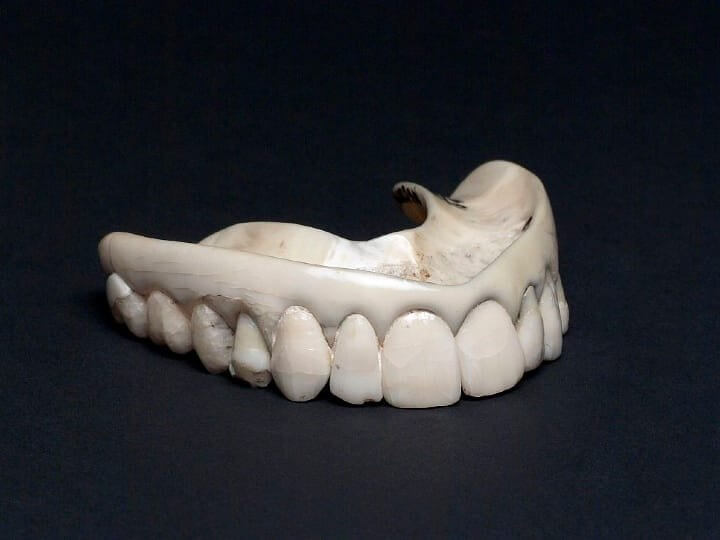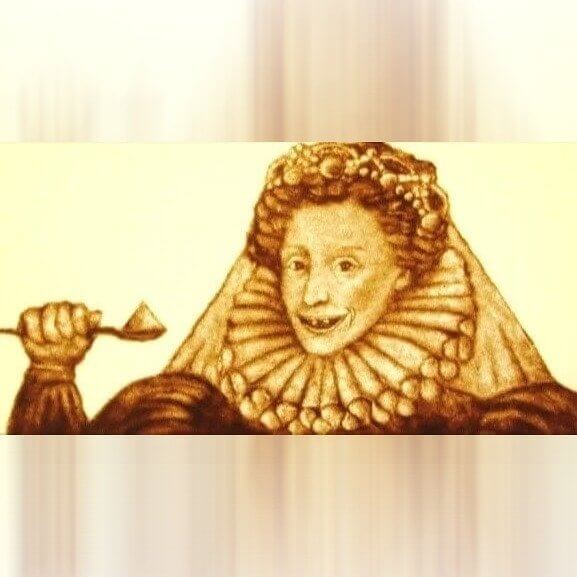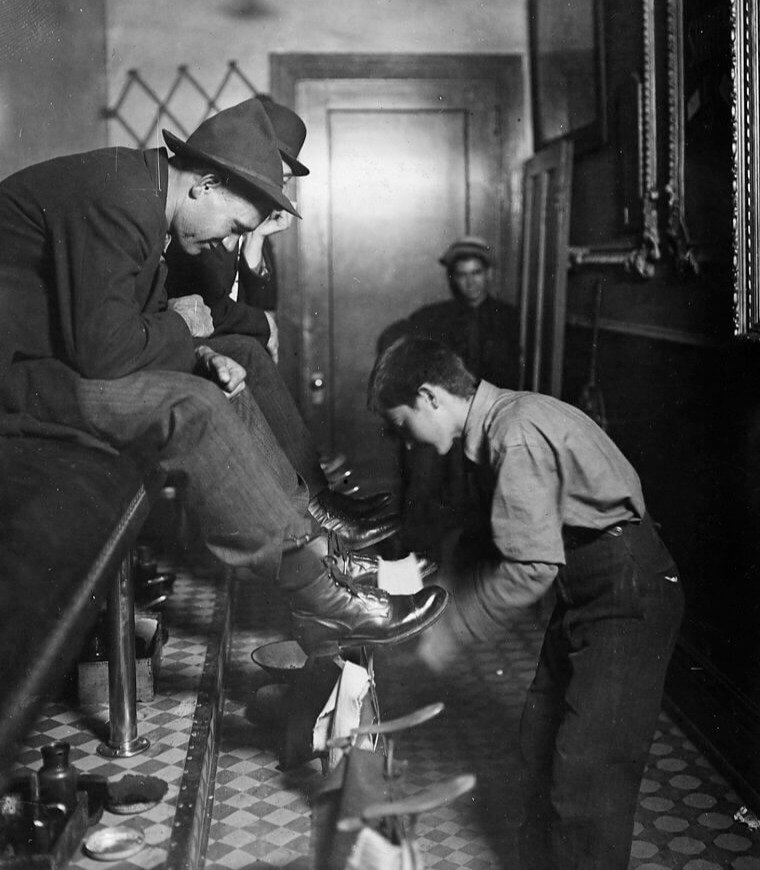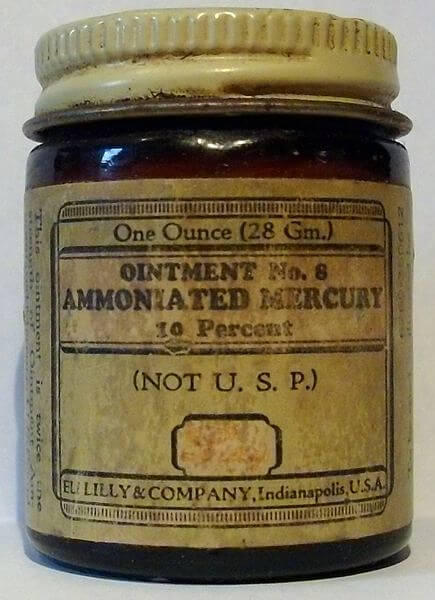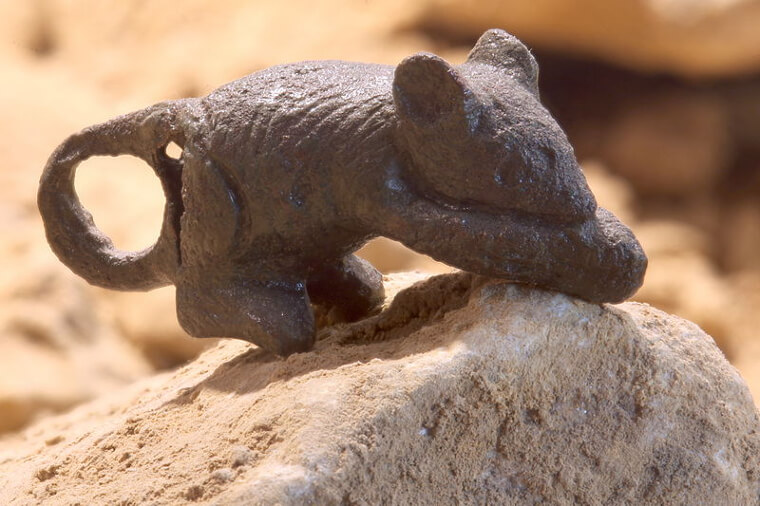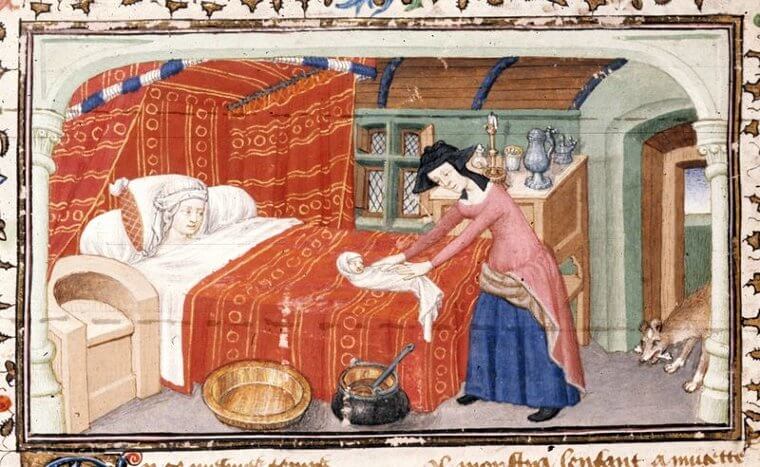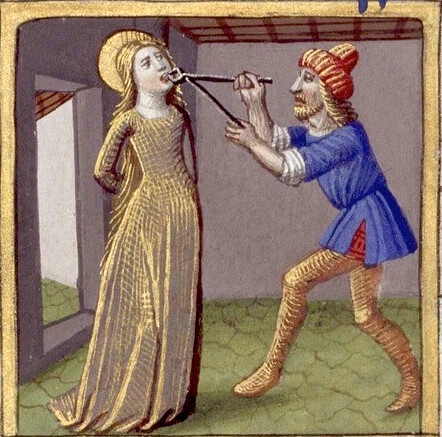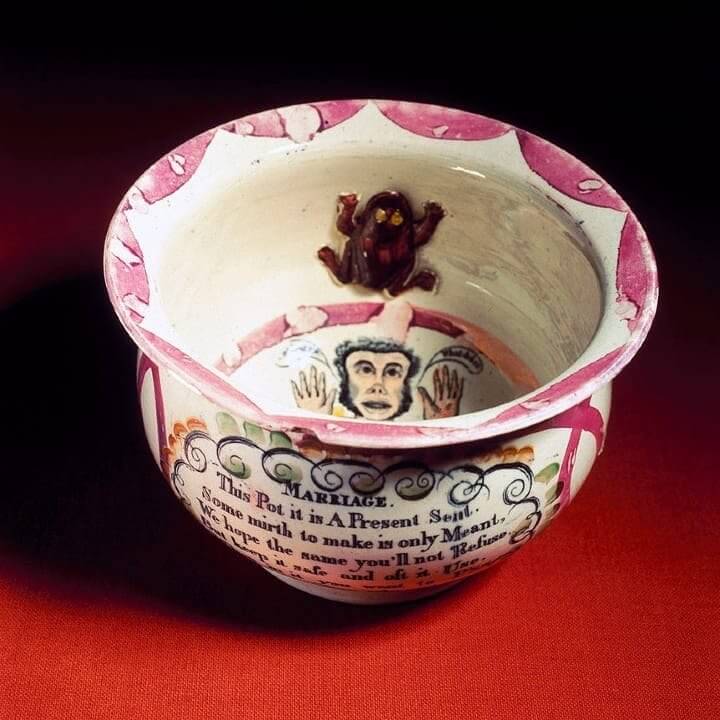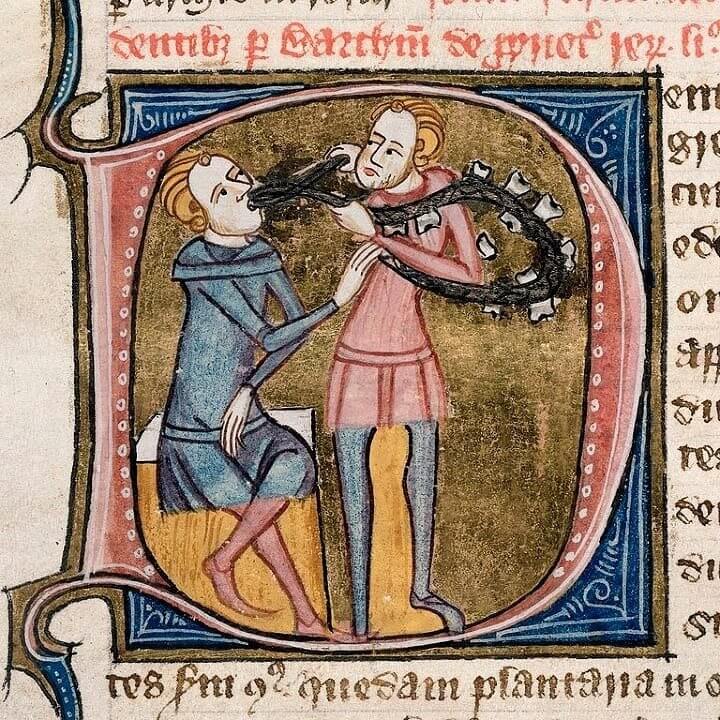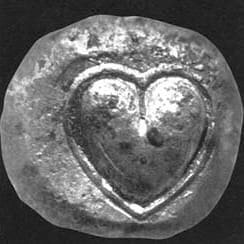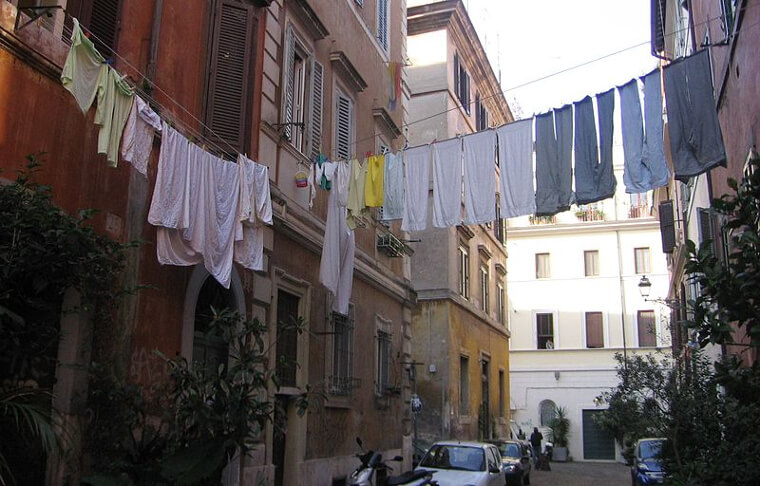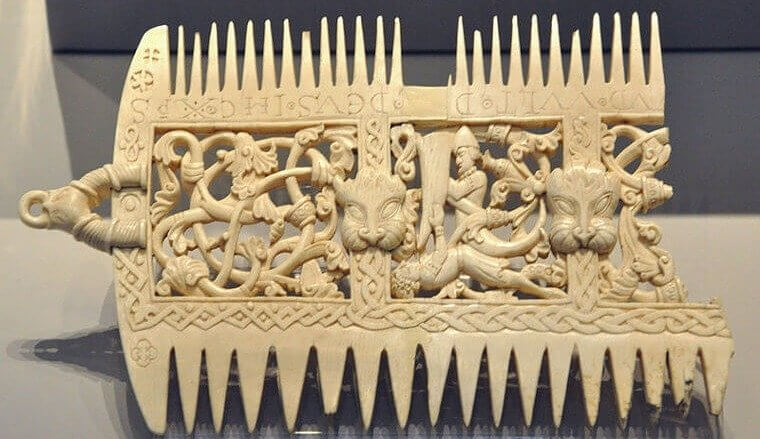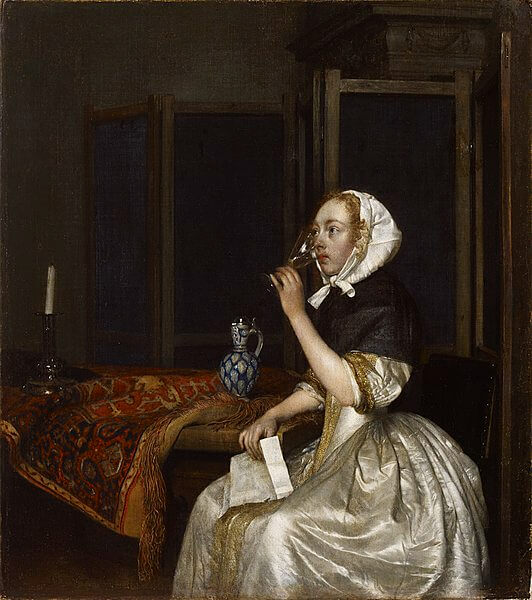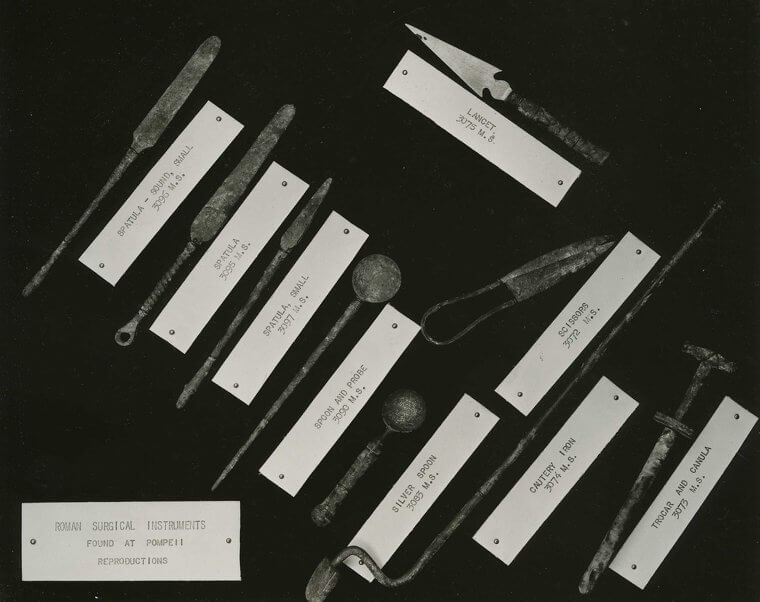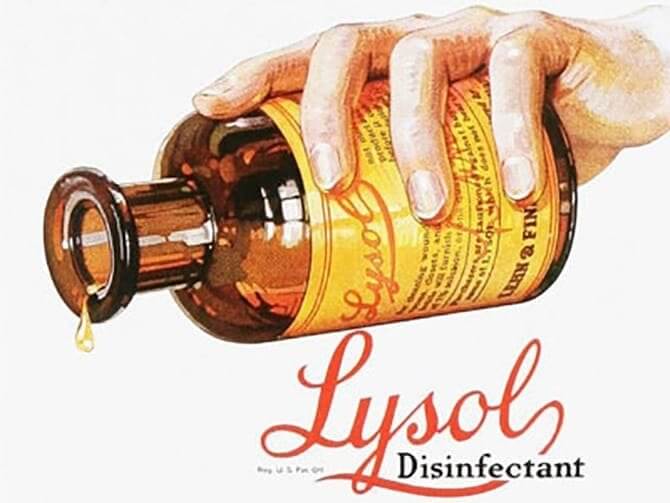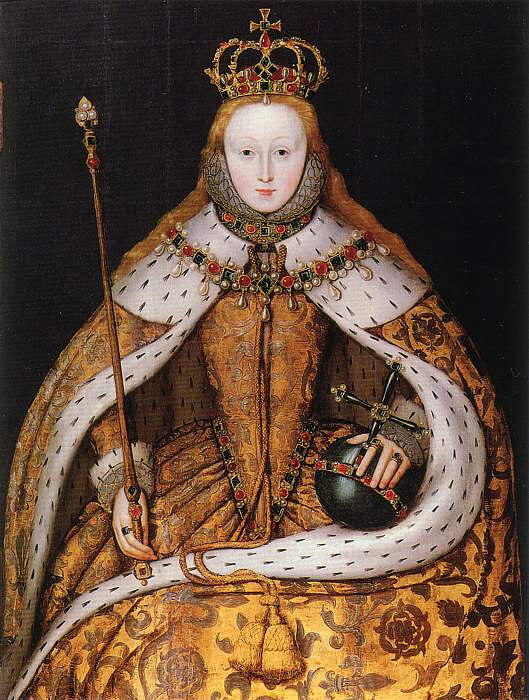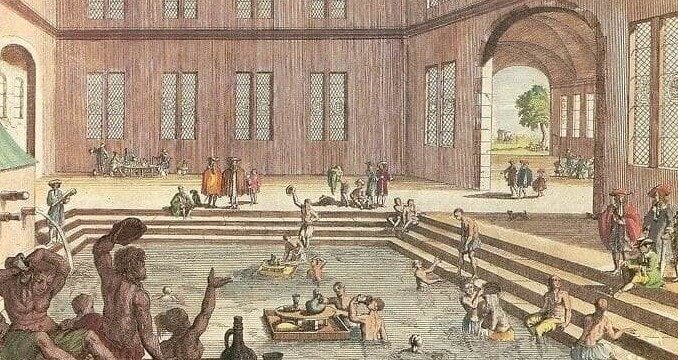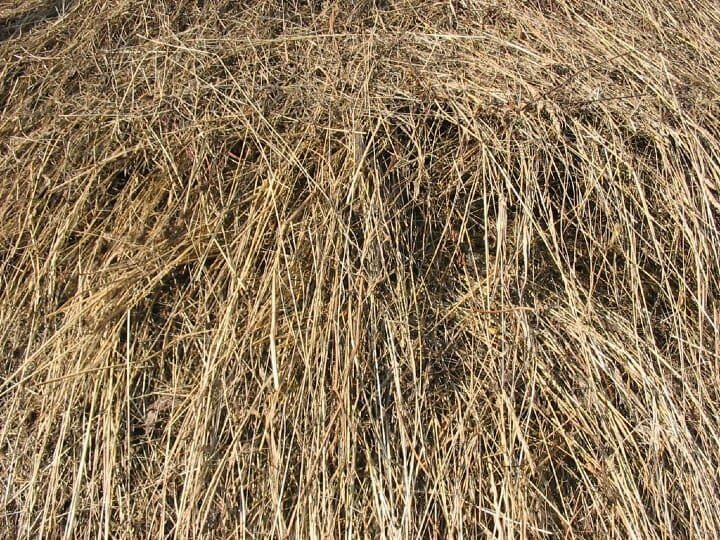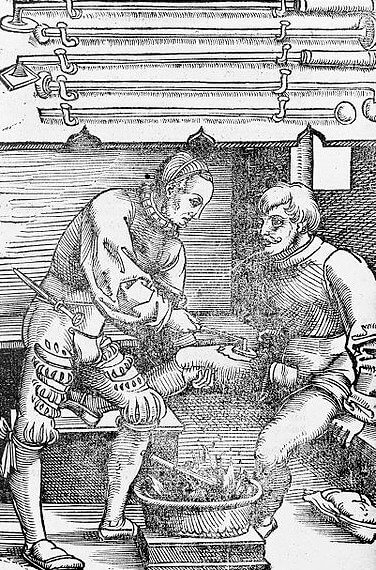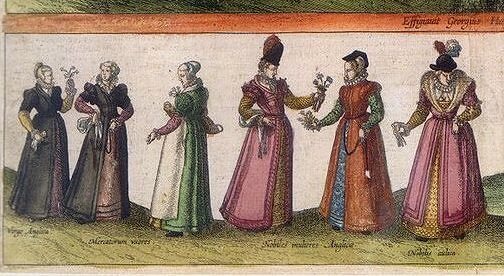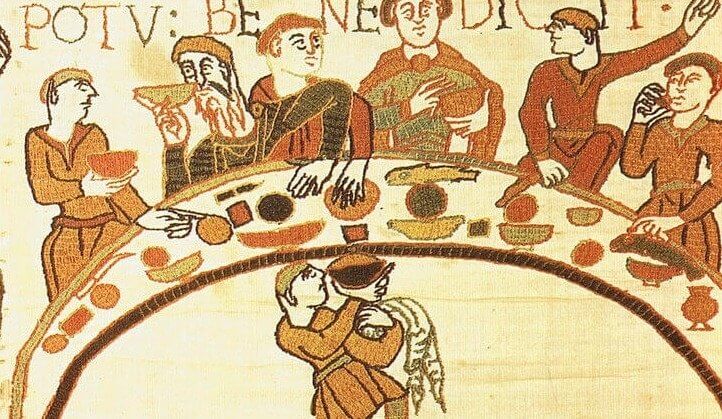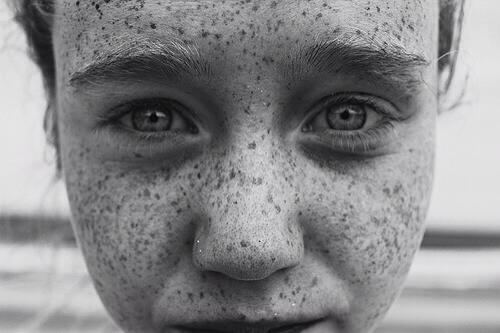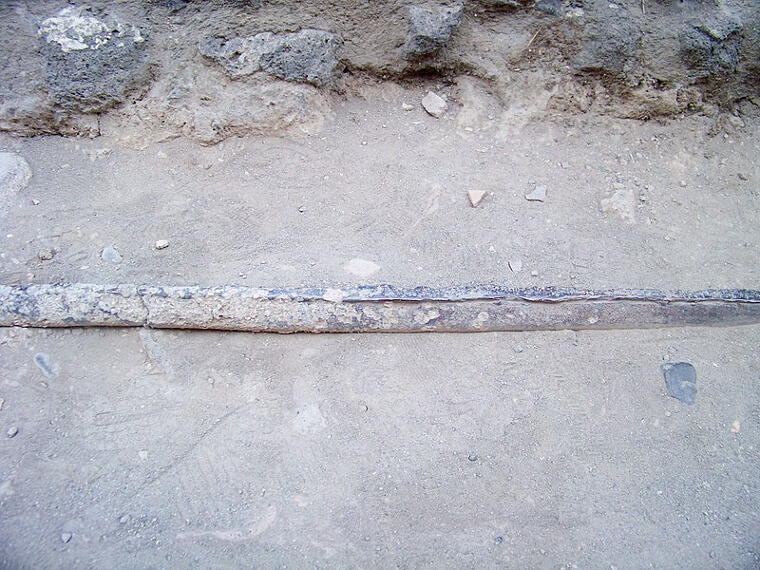Over the last few centuries, people have tried numerous ways to treat ailments or beautify themselves that have ended in disaster. From drinking potions full of disinfectant and ground beaver to slathering their faces in chalk, the practices of the past were cruel. Once you read about the chilling and unsanitary things people had no choice but to do, you'll be grateful for the simple everyday hygiene practices you have today. If you're ready to uncover some of history's dark past, continue reading.
X-Rays Were Used for Hair Removal
Nowadays, when people want their hair removed, they usually opt for various services like threading, waxing, and laser treatments. But these services weren't always available, so what did people do years ago? The answer is X- rays! In the early 1900s, X-rays have used as a means of hair removal. You would sit in front of the X-ray equipment and be done within a few minutes. Little did they know just how harmful the radiation was.
People were blissfully unaware of the harmful effects X-rays caused, like ulcers and radiation-induced cancer. It makes you wonder what people are doing today that will be deemed horrific in a few decades.
Women Wore Stick-On Mouse Skin Eyebrows
The 1700s were a long, long time ago and had some bizarre and repulsive beauty practices. While today people mainly use makeup products like eyebrow pencils and powders to fill their brows, women of the 17th century had something much different. Many would use stick-on patches made of mouse hides as eyebrows. These patches were seen as incredibly fashionable and beautiful, but in today's world, it's considered gross and creepy.
These face stickers were meant to give the impression of full perfect brows, but ultimately they serve as a reminder of how unappealing some of the things people of the past would do.
Freshen Your Breath With Pee
After eating garlic or maybe drinking a cup of coffee, you may want to freshen up your breath. What do you reach for? Most likely a mouthwash that contains some alcohol and mint flavoring. But there was actually a very different sort of mouthwash popular in the 18th century. It contained pee because the ammonia would also act as a disinfectant. This type of mouthwash can even be traced back to Roman times.
This urine mouthwash was said to clean your mouth and whiten your teeth. Who knew urine could have so many disgusting uses?
Dead People Soaked in Honey Were Eaten for Good Health
When someone passes away these days, their body is usually cremated or put into a casket, but there was a time when people would soak dead bodies in honey. This process, called mellification, essentially turned a human into a honey-covered mummy. They would be placed in a coffin and soaked in honey for up to a hundred years. But the worst part is that once their body would turn into a sort of confection, and people would sometimes eat it.
Apparently, the mixture of 100-year-old humans soaked in honey was supposed to be incredibly healing. People believed the combination could heal diseases and fix broken limbs.
Going to the Bathroom Was Very Different Back Then
There was a time when people all went to the bathroom together, completely exposed. It even became a place to chit-chat and socialize. There wasn't any toilet paper back then either, so they would use a collection of materials like sticks wrapped in cloth and dipped in water or even leaves. This sounds painful, awkward, and pretty unsanitary in today's world. Though today people still use the toilet together in public restrooms, at least there are stalls to make the experience more private.
Overall the Roman toilet setup could hardly be considered hygienic by today's standards. And if you were the one left to clean those out, your life was horrid.
Chalk Was Eaten and Used as Face Powder to Appear Pale
Back in the Victorian days, women would consume actual chalk. Not because it was tasty but because it was known to turn your lips white, which apparently was a beauty trend then. The women would even smear the chalk powder on their faces; the paler they appeared, the better. However, these Victorian women didn't know that their beauty products were highly addictive and even poisonous. Beauty really was a pain for them.
Thankfully this trend eventually died out, when side effects were brought to people's attention. But it wouldn't be long before the next gross or poisonous thing came along.
Lard Was Used to Style Hair
Looking back in time, there's no doubt that people's personal hygiene, medical treatments, and beauty choices were outright disgusting. Another gross practice of the 1700s has to do with the way they styled their hair. It was highly fashionable for people to wear their hair incredibly voluminously, sitting high atop their heads. But how would they successfully get that hairstyle? It stayed in place with the help of a pomade, usually made of pig or sheep's lard.
They would spread the lard in the hair, similar to modern-day hair gel. They would even go days without washing it, attracting bugs and releasing a foul odor.
Urine Was Used to Bleach Hair
The Elizabethan era was a time full of bizarre beauty techniques, and when it comes to hair, the list of gross practices is endless. When women of that era wanted to lighten their hair, they needed something with ammonia. Why? Well, ammonia acts as a bleaching agent and would brighten their locks. But what had ammonia in it during that time? Yep, it was urine. That's good old-fashioned pee.
Women would douse their hair in pee just to achieve a lighter color, which simply would not fly today. The lengths people went to for beauty are astounding.
Dying Teeth Black Was Seen as Beautiful
In the modern world, it is often encouraged to whiten your teeth, as this is a sign of cleanliness. However, this wasn't always the case. In fact, it was popular in Southeast Asian countries and Japan to dye your teeth black. Though it might look frightening to most people, they were covered in a glaze-like substance that was supposed to preserve teeth and prevent them from rotting. It was even believed to be extremely beautiful.
Though this practice has mostly ended around the world, there are still a few places where this custom still exists. However, Western beauty standards would call this taboo.
People Would Dump Their Waste in Moats
Usually, the sight of a castle is breathtaking, and the moat surrounding it appears to be a small serene, and beautiful lake. But there's a secret that most people don't know. The moats that surrounded castles weren't just filled with water. It was common practice to dump human waste into the water, effectively turning it into a sewer. This resulted in foul-smelling moats you would want to avoid at all costs.
There was no proper drainage and sewer system during Medieval times, so the moats acted as one. Servants would even dump food and trash into them.
Wigs Gained Popularity Because Syphilis Was so Common
In the 1500s, syphilis, the sexually transmitted disease, had surged throughout England, and the side effects were cruel. People experienced sores, blindness, dementia, and even extreme hair loss. Many people were embarrassed to be bald, so wearing wigs became popular. Louis XIV went as far as hiring 48 different wigmakers to make him wigs, and it became the newest fad. The wigs would consist of human hair, and sometimes, hair from horses and goats.
Now the wigs could serve multiple purposes: hide the effects of syphilis and baldness and serve as a marker for being a part of the higher class.
Soldiers Teeth Were Used to Make Dentures
When wealthy people lost their teeth, they had the option of replacing them with dentures. But not just any regular dentures, ones made of real teeth. In the 1800s, they were dubbed "waterloo teeth" because most of the teeth from dead soldiers at the Battle of Waterloo were used. It was a pretty gruesome process; people would go around the battle scene and pick teeth from the corpses of soldiers and then sell them.
Real teeth for dentures, belonging to dead soldiers nonetheless, are disturbing and scary to think about these days. Yet the wealthy of that time had no problem taking them.
Rotten Teeth Were a Sign of Nobility
Many people flaunt their wealth with gigantic mansions, luxury sports cars, expensive jewelry, and designer clothes. But would you believe there was a time when a sign of wealth was rotten teeth? Believe it or not, rotten teeth were sought after and served as the ultimate status symbol. This was because it meant the person consumed sugar. Sugar was an expensive and rare commodity that had to be imported, and ordinary people couldn't afford it.
Queen Elizabeth I was known to suffer from rotten teeth, and lower-class people began staining their gums and teeth to mimic her appearance.
Shoe Polish May Have Cleaned Shoes but It Was Also Deadly
Shoe shiners were everywhere throughout the Victorian era. You would often see them set up with a little block for you to plop your shoe up onto, and they would polish away, cleaning all the gunk from the streets off of people's shoes and making them look brand new. However, the most popular and affordable shoe polish used was a strong chemical, Nitrobenzene, that could cause serious health issues, especially after repeated exposure.
Nitrobenzene was so poisonous it could cause people to faint and, for those who worked within daily, could lead to death—a considerable price to pay for clean shoes.
Mercury Was Used as Treatment for Syphilis
Syphilis was widespread in the 1500s, and doctors found what they thought would be the cure. Dosing people with mercury seemed to do the trick. Patients would be rubbed in mercury ointment several times a day despite intense side effects. The treatment would go on for years; however, it was known to cause ulcers, teeth loss, and kidney failure. The mercury treatment alone could kill the patients before the disease did.
It is madness to think that it was once thought to be a good idea to be slathered in mercury to rid of a general disease. What could possibly be next?
People Would Brush Their Teeth With Crushed Mouse Brains
Today it is not uncommon for people to wake up and head straight to the bathroom to brush their teeth, usually brushing with a minty fresh toothpaste and brush. However, Ancient Greeks and Romans were using crushed bones, charcoal, and mouse brains to clean their teeth. That's right, mouse brains. Though repulsive and creepy to a modern person, this was a common practice used by many almost daily as a form of dental hygiene.
This discovery only leads to the thought that there's no doubt their breath must've been rancid. This is a hygiene practice that should never come back.
Leeches Were Used to Treat Most Diseases
It was once common practice to use leeches to treat various medical conditions. There was an obsession with these bloodsucking worms, which would be kept in jars and seen as the most reliable and valuable medical tool. The leeches were put on a patient's skin and left to suck the blood for long periods of time. Apparently, this would rid the person of the tainted blood and, therefore, free the person of the illness.
Doctors often prescribed leeches as a treatment; however, today, it's known to cause more harm than good. Those were some very dark times, and the bizarre practices seem to never end.
Eagle’s Dung Was Used to Relieve Childbirth Pain
Childbirth is an intense and painful experience, but during the Middle Ages, it was a nightmare. It was pretty common for women to die during the process though midwives did all they could to relieve the pain. A practice of this time that was believed to help was rubbing a concoction of eagle’s feces and rosewater onto the woman’s thighs. They thought this would relieve any labor pain and help the birth go smoothly.
It's hard to believe that any of these methods actually worked as intended. The thought of smeared dung from an eagle all over your legs sounds so grimy.
Worms Were to Blame for Tooth Decay
Throughout history, medical doctors had a widespread belief that toothaches were the result of a worm gnawing away at your teeth. Obviously, the doctors of the past didn't understand much about cavities and instead relied on their superstitions. They compiled plenty of treatments to combat these tiny teeth worms. One treatment consisted of filling your mouth with smoke from a cigarette or candle, then spitting it out into a bowl of warm water.
This was said to be the only way to rid yourself of tooth worms. For the sake of your teeth, be glad you live in the 21st century with modern medicine.
People Used Pots as Toilets
Do you ever wake in the middle of the night from the sudden urge to use the bathroom? Centuries ago, they had a solution for this. People would keep chamber pots under or near their beds and use them throughout the night. Then in the morning, you would dump it. Or, if you were lucky, your servants would empty it for you, and you would never see a thing. Not very sanitary, but pretty convenient.
If pots of urine and feces were sitting under your bed for hours on end, the smell would've been incredibly unpleasant. Yet the hygiene practices only get worse.
Get Your Hair Cut and Tooth Pulled at the Same Time
Would you let a barber or hairstylist pull your teeth? That seems like a weird question, right? Well, it was common hundreds of years ago to have these services done at the same place. Barbers were seen as jacks of all trades and performed minor surgeries. They would cut hair, pull decaying teeth, and even apply leeches to treat ailments. It's so strange these services were done in the same place.
But then again, most of the practices of those times don't make sense to the modern person. So how much weirder can it get?
Romans Ingested Silphium Leaves as an Early Form of Birth Control
Ancient Greeks and Romans had a love for the Silphium plant. They used it to treat many ailments like tooth cavities, bites, and growths, and even as a form of birth control. Many women would drink a concoction of this herb, claiming it was an aphrodisiac. The Romans came to love this plant so much that it went extinct. It was probably a good thing, though, since it wasn't a suitable birth control method.
It was theorized that the shape of the beloved plant’s seed looked like a heart. Therefore this inspired the shape used on the Roman currency.
Clothes Were Soaked in Urine to Remove Stains
Washing your clothes usually consists of throwing them into a washing machine with some detergent and letting the machine do all the work. If you're lucky, you have a dryer also, and your clothes are washed, dried, and cleaned within hours. However, there was a time when people cleaned their clothes by hand and soaked them in aged urine. The ammonia in the urine would strip any stains present in the clothing.
Though this sounds gross, it was the most effective way to clean clothes then. Just be glad that's a thing of the past.
People Used Exploding Combs
Combing your hair is a part of most people's daily routine, but in the 1800s, most combs and brushes were made of ivory. This made it inaccessible initially because ivory was so pricy, and by the start of the 1900s, an alternative was created. Combs began being produced with a material called celluloid. Only there was one huge issue with these new combs; they would catch fire and explode often.
Celluloid didn’t even have to be touched by a flame to catch fire; if it was near a heat source, it would combust. Sadly, a few people died while combing their beards or hair.
Servants Were Covered in Honey to Attract Flies
Everyone can attest one of the most annoying things is when a pesky fly keeps circling you, buzzing in your ear, and won't leave you alone. Egyptian pharaohs were no strangers to this but came up with a solution, albeit a strange and slightly gross one. In order to keep the flies and other bugs away from the Pharaoh, his servants would have to slather themselves in honey. This would draw all the bugs towards the servants and away from their ruler.
This sticky solution worked but must've absolutely sucked. The servants were probably sticky for days, and showers, as you know them today, were not a thing.
Women Drank Solutions With Dried Beaver Testicles to Prevent Pregnancy
The 1500s was a weird time full of concerning practices. And when it comes to birth control for women, there's no surprise that the techniques used were unbelievable. Women would actually drink a potion so horrible that just hearing about it makes your stomach churn. The drink was a concoction of moonshine and ground beaver testicles. It is a sad and disturbing reality that these were the measures women had to take to prevent pregnancy.
While you may be tempted to see if this method works, it's good to know that modern-day alternatives don't include beaver parts.
Burnt Herbs and Wine Were Used to Clean Teeth
Talking to someone from the Victorian era must've been difficult because of the smells. Brushing your teeth was not very common, and considering even when they did, they used urine, burnt herbs, and wine, it's hard to imagine they smelled nice. Often they used a combination of burnt herbs like rosemary or even gargled wine as a mouthwash. There is no way they felt refreshed after that, so it's quite puzzling.
It seems most of the hygiene practices people used in the past did more harm than good. Thankfully real toothpaste exists today.
Medieval Women Used Moss as Pads and Tampons
Life in the Middle Ages seemed uncomfortable and quite disgusting. Since pads and tampons weren’t invented yet, women had to improvise whenever they menstruated. Whenever women were menstruating, they wore something that resembled underwear and lined it with rags. If they were particularly poor, it was filled with moss to absorb the blood. Not a fun, sanitary, or comforting experience. The women that lived during that time must have been miserable.
Medieval women didn’t have the luxury of going to the drugstore and purchasing pads or tampons. Their methods of survival were necessary but, unfortunately, appalling.
There Was No Sterilization or Anesthesia for Surgeries
People of the 1800s had no concern or fear of germs and bacteria. When it came to performing any type of surgery, the doctors never sterilized the tools used. It wasn't even a concept brought to people's attention until the end of the century. This put people at high risk for infection because the same uncleaned instruments were used from person to person and could very well spread potential diseases.
If that wasn't scary enough, there was also no decent anesthetic, so when you were cut open, you felt it. Truly something out of a horror movie.
Poisonous Plants Were Used for Makeup
Women are always sold different products to improve their looks. Beauty standards are constantly changing, yet they inevitably always target women, and the 16th and 17th centuries were no different. A trend of that time was to have big, dilated pupils and rosy cheeks purely for aesthetic purposes. Although the only way to achieve this was to eat a very poisonous plant named nightshade. The side effects were horrific, but again, beauty is pain.
Women would risk severe side effects from ingesting this plant, like heart failure, hallucinations, ulcers, and severe stomach pain. Was it worth it?
Men Applied Chicken Droppings to Their Heads to Cure Baldness
Male pattern baldness is experienced around the world and doesn't discriminate. Yet it can cause many to experience much shame about their hair loss. In the 16th century, the search for a solution began, and the things people came up with were disturbing. For those who didn't like wearing a wig, a topical solution that could be applied to the bald head was the next best bet. Can you guess what the mixture they concocted was?
A concoction of chicken droppings and potassium mixed together and applied like lotion to your head was said to stimulate hair growth though it was never successful.
Women Used a Disinfectant Solution as Birth Control
When women don't have access to birth control, the solutions can become dangerous. Women were often used as test subjects to see if various substances worked or caused something else to happen. In this case, Lysol, the cleaning disinfectant solution, was advertised as the solution. Birth control in the United States wasn't legal, yet advertisements for this product promoted its use as a savior for pregnancy and all other feminine hygiene issues.
As you could've guessed, the harsh disinfectant was not successful or safe to use in your nether regions. Just the thought of using it could send shivers down your spine.
Lead Makeup Was Commonly Used by Royalty
Queen Elizabeth I was known for sporting an unnatural appearance and often used lead-based makeup to appear extremely white. During this era, pale skin was sought after, and many copied her, trying hard to replicate her pale skin. The act of smearing lead on your face to achieve this was far too common and incredibly bad for your health. It is even believed that Queen Elizabeth ultimately died from lead poisoning.
Many thought the Queen caked her face in this lead-filed face powder to cover scars from smallpox and blemishes. Ultimately here's another example of beauty being a pain, or in this case, just death.
Everyone Bathed Together
How would you feel if every time you bathed yourself, it was in a big pool with all of your friends? Sort of weird, right? Well, clearly, in the Middle Ages, there was nothing off the table. Bathhouses were a common way to clean yourself and socialize. Clearly, people who lived during that time had warped views of cleanliness. Sitting in a hot pool of filth doesn't sound like a great idea.
Maybe it was fun to bathe with a group of friends but having a private bath is much preferred. There is no exaggeration when saying that hygiene back then was essentially nonexistent.
Rush Floors Were Full of Dropped Food and Animal Droppings
Rush floors were popular throughout the Middle Ages all the way up through the 16th century. It was a combination of herbs and grasses compacted down and splayed over the floors like a carpet. Its purpose was to provide insulation and fill homes with a sweet fragrance. Unfortunately, they were also a breeding ground for bacteria and bugs. More often than not, it was full of animal waste and food and drinks from spills.
The very top layer would be changed semi-regularly, but it was common just to throw fresh grass on top, resulting in the bottom layer being filthy. It could be decades before it was ever properly removed and replaced.
Wounds Were Cauterized With Pieces of Heated Metal
As we all know, losing too much blood can lead to death. So in the old days, people had to figure out ways to stop the bleeding from severe injuries before the victims would bleed out and die. The solution was to cauterize the wounds using a piece of metal held over a fire so it was boiling. However, the burns from doing this were so intense that if they didn't die from losing blood, they would die from the pain of the cauterization.
This era sounds like pure pain, disgust, and horror. If there was ever a time to be thankful for being alive with modern-day inventions, it's now.
Flowers Were Carried Around to Cover up Bad Smells
Is it any surprise that people reeked during the Victorian era? Surely in every period ever, humans smelled, but with the lack of proper hygiene practices, cities smelled absolutely foul. A way to combat this was by carrying around bouquets of fragrant flowers. That way, you could walk around and sniff the flowers all day whenever you caught a whiff of something smelling rancid. Which happened quite frequently, you can imagine.
Especially on a hot day, the city would be full of putrid smells that could be super overwhelming, so if you had something to smell like flowers or a scented handkerchief, you were lucky.
There Were No Utensils to Eat With
It is pretty known that people don't eat with utensils, and in many parts of the world today, it is still a common practice. But this is particularly gross because people in the Middle Ages were not keen on washing their hands. Therefore when they ate without utensils, they were eating with their hands that were full of bacteria and germs. Sounds appetizing, doesn't it? Yummy, E-coli and bread, anyone?
Just try not to think too much about unwashed dirt-covered hands reaching into communal plates of food. Medieval times were a dark place to be.
Sulfur Was Used to Remove Freckles
Today freckles are seen as charming and beautiful. But there was a time when people thought they were ugly and compared them to warts and blemishes. Therefore, it was common practice to try and rid your face of them by using sulfur. This isn't the first time people put weird products on their faces in hopes of meeting some beauty standard. Thankfully, freckles aren't a thing people want to remove nowadays.
Rubbing sulfur on your skin is an easy way to burn yourself so if people of those eras weren't already suffering enough, add this weird practice to the list.
Water Pipes Were Made of Poisonous Lead
Lead poisoning was a common fate for ancient Romans. Their main water supply ran through pipes made of lead, so it's no surprise that the constant exposure made them very sick. The consequences of this repeated exposure led to things like nausea, infertility, stomach pain, and even death. Despite the horrible effects, they continued to use lead because it was incredibly cheap and accessible—just another thing to add to the list of deadly ancient practices.
The convenience of running water probably outweighed any other factor during that time anyway. Again, another reason to be thankful for modern-day practices.

